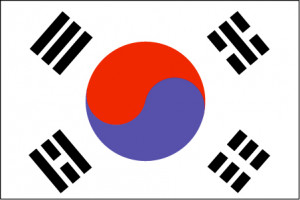
South Korea’s Important Election

The run-up to voting on March 9 involved intense, dirty campaigning. Negative ads and personal invective relentlessly defined the contest, crowding out more serious policy discussion.
South Korea is a global leader in advanced telecommunications and computer technologies of all sorts. Average internet speeds are among the fastest on earth
Bizarre computer-generated imagery, termed “deepfakes,” were prominent, used by supporters and opponents of the candidates. Trendy young political staffers spearheaded these new efforts, unusual compared to traditional political media.
Thanks to technology, the conservative, intimidating prosecutor Yoon appeared flexible, literally animated. This may have deflected some opposition criticism, including that he is anti-feminist.
In the end, the election was the closest since South Korea achieved truly representative government in the 1980s. Yoon won 48.56 percent of the vote, Lee 47.83 percent.
The Democratic Party alliance retains a large legislative majority, and Yoon will have to compromise in order to have any significant policy success. In the campaign, he promised a harder line toward North Korea, and closer relations with the United States. These are changes in degree, not in kind.
Media emphasis on the nasty nature of the campaign overlooks the more important fact that voters collectively reconfirmed South Korea’s law-abiding democracy. Considerable credit for this continuity goes to the leadership of South Korea’s outgoing President Moon Jae-in.
At the end of 2018, the influential Asia News Network named President Moon “Person of the Year.” South Korea’s chief executive rightly receives praise for initiating dialogue between the U.S. and North Korea during Donald Trump’s presidential term.
This accomplishment is too easily oversimplified and minimized. At the end of 2017, Trump and North Korea’s Kim Jong-un were trading crude and personal insults via the global media.
Moon’s work behind the scenes not only restrained but also reversed that sad, silly situation. He insisted on meeting with the North Korea delegation to the Winter Olympics held in February 2018 in Pyeongchang, South Korea. The group included Kim’s sister, an influential figure in the regime.
General Park Chung-hee’s dictatorship imprisoned Moon for anti-regime activism. Later, he pursued a career in human rights law. He also served in the Republic of Korea (ROK) army special forces, and saw action in the DMZ (Demilitarized Zone) along the 38 th Parallel
Military ties between South Korea and the United States are of vital importance, and are often also overlooked. Collaboration is particularly close and long-term between the armies of our two nations. During the long Vietnam War, South Korea maintained approximately 50,000 troops in South Vietnam.
A large percentage of that total were combat troops. ROK Army soldiers developed a deserved reputation for combat effectiveness. South Korea at the time had no substantial economic investment in South Vietnam.
This commitment to the United States dates from the Korean War of 1950 to 1953. That war made the Cold War global, no longer focused only on divided Germany.
President Harry Truman acted decisively at once to commit the U.S. to defending South Korea when North Korea’s forces invaded in June 1950. President Dwight Eisenhower acted skillfully, and ruthlessly, in escalating bombing to achieve the 1953 armistice.
The courage of these American presidents resonates today.
Arthur I. Cyr is author of “After the Cold War.” Contact acyr@carthage.edu
